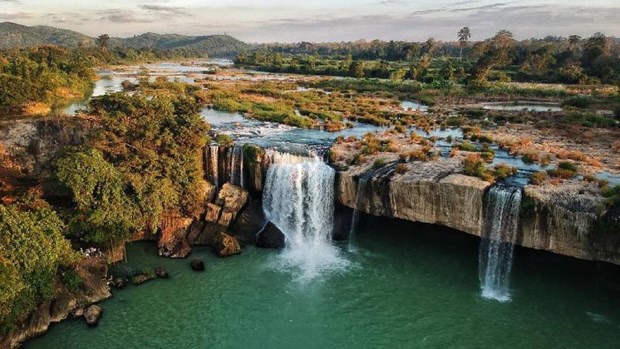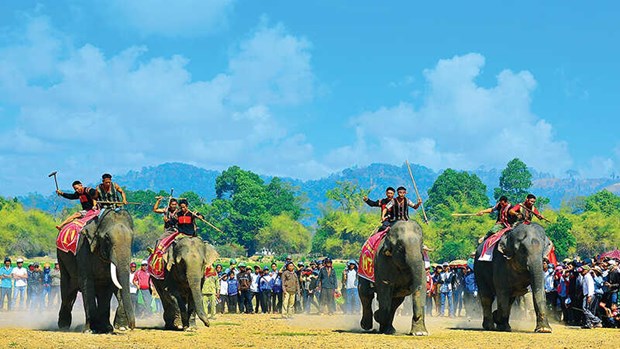Central Highlands urged to “awaken” tourism potential
The Central Highlands region boasts huge potential for tourism development; however, the regional non-smoke industry has to date failed to unlock its potential and strengths.

Dray Sap waterfall in Dak Nong province. (Photo: dulichtaynguyen.org)
The Central Highlands, which consists of Kon Tum, Gia Lai, Dak Lak, Dak Nong and Lam Dong provinces, is located in the area of the Vietnam-Laos-Cambodia border T-junction, and adjacent to the north central, south central coastal and southeast regions.
The region is endowed with many valuable resources for tourism development such as landscape along Dak Bla, Serepok, Krong Ana, Krong No, Dong Nai rivers; large and beautiful lakes such as Tuyen Lam, Dan Kia Suoi Vang (Lam Dong), Lak (Dak Lak), Bien Ho (Gia Lai), and hydroelectric lakes of Yaly and Dai Ninh, and such beautiful waterfalls as Dray Sap, Trinh Nu and Dieu Linh. It is also home to 47 ethnic minority groups with unique cultures.
Deputy Director General of the Vietnam National Administration of Tourism (VNAT) Ha Van Sieu said that the region is rich in natural resources and cultural identities, which are favourable conditions to develop community-based and experience tourism, such as tours to trade villages and explore ethnic minority’s cultures.
However, these types of tourism have not yet developed commensurately, Sieu noted.
To untie “bottlenecks” to meet tourism development requirements, Nguyen Duy Thuy, Director of the Institute of Social Sciences in the Central Highlands Region, said that region should look back on its investment attraction and infrastructure construction.
According to him, the region is lacking development connectivity between its localities, skilled human resources, and methodical programmes on tourism promotion to foreign countries.
Limited transport infrastructure and downgrading roads in the region are also hindering the non-smoke industry from development, Thuy stressed.

An elephant race in the Central Highlands. (Photo: dulichtaynguyen.org)
He proposed Central Highlands provinces build a shared database, rearrange the destination network, increase investment in the sector, improve the quality of human resources, and step up promotion activities./.
VNA
 Agoda lists Da Lat among cheapest destinations for year-end holidays
Agoda lists Da Lat among cheapest destinations for year-end holidays
 TasteAtlas picks out two Vietnamese dishes among world’s 100 best rated crustacean dishes
TasteAtlas picks out two Vietnamese dishes among world’s 100 best rated crustacean dishes
 Vietravel expands business in Indian market
Vietravel expands business in Indian market
 2025 Nha Trang – Khanh Hoa Sea Festival to spotlight cultural heritage space
2025 Nha Trang – Khanh Hoa Sea Festival to spotlight cultural heritage space
Vietnam, a unique destination attracting Indian tourists: Indian newspaper
 Cao Bang eyes new opportunities for cross-border tourism development
Cao Bang eyes new opportunities for cross-border tourism development
 Kien Giang strives to attract tourists to finish the year on high note
Kien Giang strives to attract tourists to finish the year on high note
 Rivers provide major resources to boost Vietnam’s tourism
Rivers provide major resources to boost Vietnam’s tourism
 Dong Thap plants over 100 ha of flowers for Tet
Dong Thap plants over 100 ha of flowers for Tet
 Donghai Airlines launches direct route to Khanh Hoa
Donghai Airlines launches direct route to Khanh Hoa



